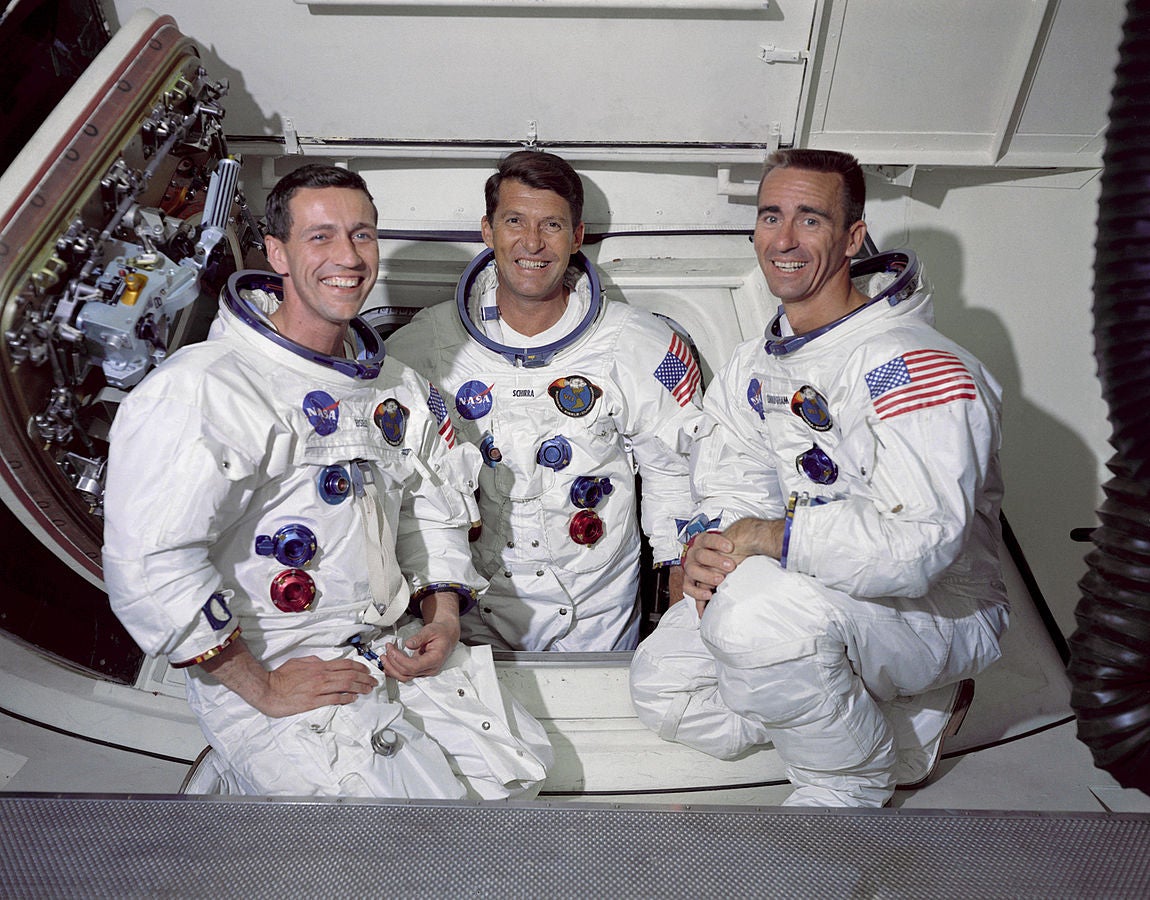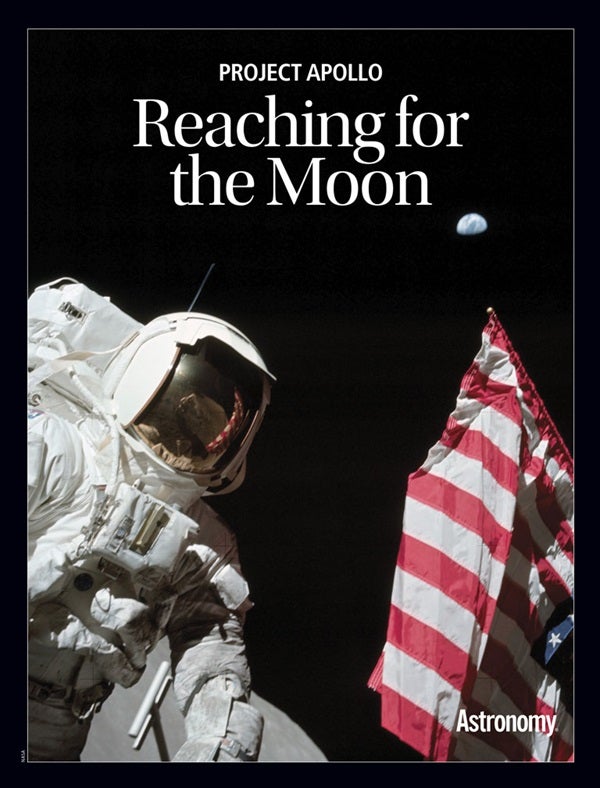
Other successful tests included checks of the radar that would be used to dock the CSM and LEM, tests and checks of the environmental control system, and eight successful firings of the service module’s powerful rocket, which would put future Apollo missions on a trajectory to the Moon and return them to Earth. This rocket had no backup system: If it didn’t fire properly, astronauts would not make it to the Moon, or might not be able to return home.
Apollo 7 also performed the first live television transmissions from an American spacecraft. During the mission, the astronauts completed seven short TV sequences, showing the audience the spacecraft that housed them and other aspects of living in space, including demonstrations of weightlessness, food preparation, and the removal of condensation from the spacecraft’s interior. “We were not looking forward to doing that,” Cunningham recalls. “We knew it was in the plan because it was a deviation from the professional kind of technical things we were accomplishing. But we did, it turns out, enjoy it after we got started. … We actually saw it as kind of a break that we could enjoy while we were flying.”
For the crew, “[broadcasting] was the least significant and important thing for the mission that we did in those whole 11 days; it was an outside entertainment,” says Cunningham. “But I don’t think the public saw it the same way as we did. They saw it as their chance to share in what was going on with the Apollo program.&rdquo
; One of the mission’s few hiccups occurred shortly after liftoff, when Schirra developed symptoms of a cold. “Well, if you listen to the outsiders or even some of the ground controllers … today they probably still think that we all got sick. But that’s not the case. Actually, Wally was the one that got sick,” says Cunningham. “But Wally didn’t want to have the world thinking that somehow or other he was weak and he got a cold and we didn’t. So he insisted that we all take the cold pills.”
As for the effect on the mission, “it kind of tied him up a little bit. He was not as efficient the first couple of days, but after that, he went back on,” says Cunningham. “He was the most experienced one – the only experienced one – in the cockpit, and we did very well with accomplishing the mission objectives. But the fallout from that was that Wally irritated the ground controllers to some degree.”
Apollo 7’s crew spent more time in space than the initial Moon landings would ultimately require. They took with them a packed list of objectives to complete, and they were so successful that Mission Control added several more tasks to maximize the mission’s benefits during the flight.
“In the end, it was declared 101 percent successful,” says Cunningham. “And historically, if you look back at it, it is still today, 50 years later, the longest, the most ambitious, the most successful first test flight of any new flying machine ever.&rdquo
; “We were very pleased to be making the flight,” Cunningham told Astronomy in an interview. “The general public at large was excited and kind of filled with tenseness over the fact that the last one had been a fatal accident. But we spent that 21 months getting about 1,060 changes in the spacecraft. Our crew was responsible for some of them, the engineers were responsible for most of them, and were all working together, looking forward to getting back on schedule and landing a man on the Moon before the decade was out, because that was the goal.”
Testing, testing
Schirra, Eisele, and Cunningham were the first to fly in the Apollo Command/Service Module (CSM), which provided housing and power for Moon-bound astronauts, as well as a re-entry and recovery vehicle. After launch on future Apollo missions, the CSM was manually docked with the Lunar Excursion Module (LEM), the lunar landing vehicle. Despite Cunningham’s designation as lunar module pilot, Apollo 7 carried no lunar module. However, its mission goals included testing the CSM’s rendezvous capability with a LEM, which on future excursions would sit inside the third stage of the Saturn rocket, the S-IVB, during launch.
Early in the mission, the Apollo 7 crew moved the CSM ahead of the rocket stage and turned it around to dock with a target mounted where the LEM was to reside. One of the four adapter panels connecting the base of the CSM to the Saturn rocket – which would be jettisoned on future missions but left attached to the rocket stage during Apollo 7 – had caught on a retention cable and become stuck only partially open. After several orbits, the panel deployed completely, allowing the crew to successfully simulate the docking procedure used on subsequent Apollo missions to connect with and extract the LEM.  
; On January 27, 1967, Apollo 1 crew members Roger Chaffee, Ed White, and Gus Grissom were killed in a fire during a test of the spacecraft while on the launchpad. Twenty-one months later, the three men who had originally served as their backup crew – Walter Schirra Jr., Donn Eisele, and Walter Cunningham – flew on Apollo 7, the first manned American spaceflight since the accident. Their mission was a resounding success, speeding the Apollo program ahead to reach the Moon by the end of the decade.
Apollo 7 launched from Cape Kennedy, Florida, October 11, 1968. Onboard was a three-man crew of commander (Schirra), command module pilot (Eisele), and lunar module pilot (Cunningham). They remained in orbit for 10 days, 20 hours before splashing down October 22. The mission aimed to achieve several key objectives, including the demonstration of successful crew, mission support, and spacecraft capabilities in preparation for manned missions to the Moon.

You can follow mankind’s journey to the lunar surface in our free downloadable eBook: Project Apollo: Reaching for the Moon.









